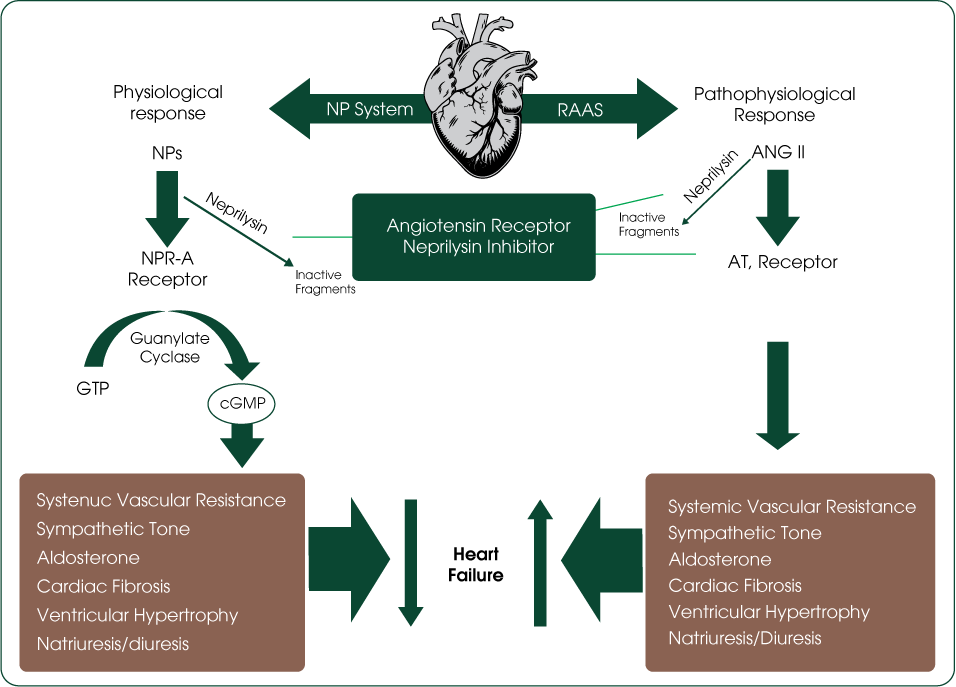Sacubitril: Sacubitril is a neprilysin inhibitor. Neprilysin is an enzyme that breaks down several beneficial substances in the body, including natriuretic peptides, which help regulate blood vessel dilation, sodium balance and fluid volume. By inhibiting neprilysin, sacubitril increases the levels of these beneficial peptides, which can lead to vasodilation (widening of blood vessels) and reduction of fluid retention.
Valsartan: Valsartan is an angiotensin receptor blocker (ARB). It works by blocking the effects of angiotensin II, a hormone that causes blood vessels to constrict and promotes sodium and water retention. By blocking angiotensin II, valsartan helps relax blood vessels, reduce fluid retention, and lower blood pressure, which is particularly important in heart failure cases where high blood pressure can worsen the condition.
Vasodilation: The increased levels of natriuretic peptides from sacubitril promote vasodilation, which reduces the workload on the heart by easing blood flow through the blood vessels.
Fluid Regulation: Both the vasodilation effect and the angiotensin receptor blockade from valsartan work together to decrease fluid retention and ease the strain on the heart. This can help prevent the fluid accumulation that often leads to symptoms like edema and shortness of breath.
Improved Heart Function: By reducing the strain on the heart and improving blood flow, sacubitril/valsartan can help improve overall heart function, exercise capacity, and quality of life for individuals with heart failure.
